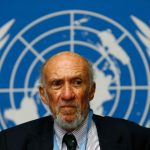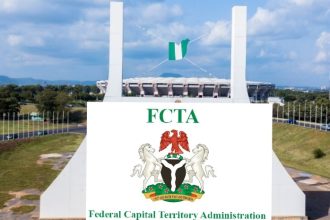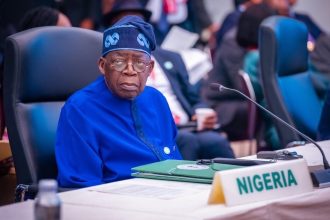BELÉM, Brazil — Thousands of Indigenous people and environmental activists marched through the streets Saturday carrying flags, banners and one unflattering statue of U.S. President Donald Trump in the first protest outside an annual United Nations climate conference in four years.
Traffic around the COP30 summit venue in Belém, Brazil, halted as protesters from across the world, including Indigenous activists from the Amazon region, braved the tropical heat to demand governments step up efforts to combat climate change and protect nature.
“For the first time, at a COP event, we, the indigenous peoples, are occupying this space and speaking for ourselves,” said Takak Xikrin, a member of the local Xikrin people. Members of his community carried banners decrying water contamination in their territory, while other Indigenous activists protested logging and plans for oil drilling in the Amazon.
“It is a historic moment for us to be part of this march … and show the world that we are the answer,” he added. “Indigenous knowledge is fundamental to protecting the Amazon. … If Indigenous people do not protect the Amazon, the world will suffer a collapse.”
Local media quoted police as saying 20,000 people attended the protest.
The march came after two protests centered on Indigenous rights disrupted the entrance to the conference earlier this week.
On Tuesday, youth activists and indigenous protesters forced their way into the venue, clashing with United Nations security, followed by another peaceful demonstration Friday that saw one Indigenous group block access to the entrance for several hours.
The protests set apart this conference, hosted in democratic Brazil, from the past three years of summits held in Egypt, the United Arab Emirates and Azerbaijan — autocratic states with little tolerance for demonstrations.
Many protesters relished being back in the streets, noting this was the first such march since the 2021 conference in Glasgow, Scotland — a youth-led protest that took place under pandemic restrictions — and the 2019 Madrid summit.
“Past COPs have restricted people’s voices. It’s important that the COP has open streets for demonstration so that when the polluters are here, we can raise our voices to them a little stronger,” said Pema Wangmo Lama, a 26-year-old activist from Nepal.
“At this COP, people can be upfront, and Indigenous people have been very upfront about the things they and their community have faced” as a result of climate change and environmental degradation, said Wangmo Lama, herself a member of Nepal’s Mugum Indigenous group.
At COP30, Brazil’s government has highlighted the role of Indigenous peoples in fighting global warming and protecting the Amazon, which plays a key role in regulating the world’s climate but is under threat from logging, mining, agriculture and infrastructure projects.
But many Indigenous groups say their concerns are not addressed in the negotiating rooms.
“The meaningful representation of Indigenous people has never been a reality” at climate summits, Wangmo Lama said. “Our voices are not heard.”
Climate activists were also part of the march, calling for action rather than more “blah, blah, blah,” a catchphrase coined by Swedish activist Greta Thunberg, who founded the global movement Fridays for Future.
“It’s so motivating to see people who are on the front line, who are seriously affected by the climate crisis, coming together across the world,” said Muhammed Lamin Saidykhan, an activist from Gambia working with Climate Action Network. “I hope leaders are going to see this power and listen to the power and do the right thing.”
And at least one marcher shared his thoughts about Trump, who has worked to undermine climate action and chosen not to send a U.S. delegation to this year’s talks.
The internationally known Danish artist Jens Galschiøt, whose past works include a series of 26-foot-tall statues commemorating the Tiananmen Square massacre in China, created an 8.5-foot copper sculpture of Trump that his son, Lasse, pulled along throughout the march. Lasse Galschiøt had 6,000 3D-printed figurines he was handing out along the way.
The statue depicts the U.S. president naked, holding a golf club in one hand and the scales of justice in the other. He sits on the back of a thin man who stands on a pedestal that reads, “The Orange Plague.”
The White House did not immediately respond to a request for comment.
“Trump is the big guy here, and the small guy represents you and me, Denmark, Brazil and the climate that he’s trying to control,” said Lasse Galschiøt, adding: “He shouldn’t be on our shoulders.”
At a press conference Friday night, COP30 CEO Ana Toni said the summit has more than 900 Indigenous participants, much higher than the 300 registered at last year’s gathering in Azerbaijan, and promised to listen to them. Brazil came under pressure from the U.N. earlier this week over the protests disrupting access.
The Brazilian government has also faced months of complaints about its decision to host the summit in Belém, a port city near the mouth of the Amazon River where a shortage of hotel rooms has sent lodging costs soaring and prompted some countries and even the U.N. to consider limiting the number of people they sent.
“We have a COP in the Amazon. We could have chosen to have a COP in São Paulo, Rio or Brasília, but we would not be seeing so many Indigenous peoples,” Toni said. “They wouldn’t have had their voice heard.”









